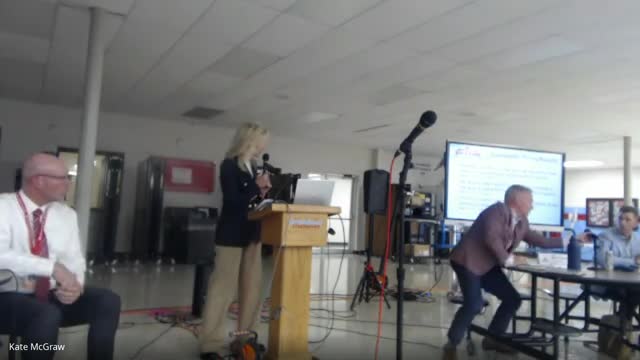Education funding crisis threatens school facility repairs
October 28, 2024 | Arrowhead UHS School District, School Districts, Wisconsin
This article was created by AI summarizing key points discussed. AI makes mistakes, so for full details and context, please refer to the video of the full meeting. Please report any errors so we can fix them. Report an error »

During a recent government meeting, discussions centered on the challenges facing local education funding, particularly regarding the maintenance and repair of school facilities. A key speaker highlighted that the current revenue limits, established under state law since 1993, have significantly restricted available funding for essential infrastructure improvements.
The speaker emphasized that while instructional programming receives priority funding, this allocation often comes at the expense of necessary building maintenance. As a result, many school facilities are deteriorating, leading to concerns about the long-term viability of educational environments. The historical context of the funding formula was noted, indicating that the financial provisions for each student were never intended to cover the costs associated with aging buildings.
Financial implications were also discussed, with specific figures presented regarding the tax impact of proposed funding measures. For instance, a new high school building would incur a tax impact of $1.91 per $1,000 of equalized property value, while an increase in the operating referendum would add $2 per $1,000 for four years. For an average home valued at approximately $515,000, this translates to nearly $1,000 in additional taxes.
The meeting also referenced past efforts to address these issues, with a participant recalling their involvement in a facilities task force in 2011, which identified similar challenges that remain unresolved today. The ongoing dialogue underscores the urgent need for a reevaluation of funding strategies to ensure that educational facilities can meet the needs of students and staff alike.
The speaker emphasized that while instructional programming receives priority funding, this allocation often comes at the expense of necessary building maintenance. As a result, many school facilities are deteriorating, leading to concerns about the long-term viability of educational environments. The historical context of the funding formula was noted, indicating that the financial provisions for each student were never intended to cover the costs associated with aging buildings.
Financial implications were also discussed, with specific figures presented regarding the tax impact of proposed funding measures. For instance, a new high school building would incur a tax impact of $1.91 per $1,000 of equalized property value, while an increase in the operating referendum would add $2 per $1,000 for four years. For an average home valued at approximately $515,000, this translates to nearly $1,000 in additional taxes.
The meeting also referenced past efforts to address these issues, with a participant recalling their involvement in a facilities task force in 2011, which identified similar challenges that remain unresolved today. The ongoing dialogue underscores the urgent need for a reevaluation of funding strategies to ensure that educational facilities can meet the needs of students and staff alike.
View full meeting
This article is based on a recent meeting—watch the full video and explore the complete transcript for deeper insights into the discussion.
View full meeting
